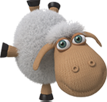What are Some Typical Sleep Disorders?
Insomnia:
Half of America reports having difficulties with sleep. For most sufferers of insomnia, the problem is not physical in nature. Most cases of insomnia are considered transient or short-term insomnia.
Transient insomnia results from stress, excitement, or environmental factors, but it only lasts a few nights. Short-term insomnia lasts for two or three weeks and usually results from ongoing stress or some sort of medical or psychiatric disorder. Chronic insomnia lasts longer than a month and results from underlying medical, behavioral, or psychiatric problems.
Narcolepsy:
Narcolepsy affects 1 in every 2,000 people. Narcolepsy occurs when the part of the brain that regulates sleep and wakefulness does not function properly, causing sudden spells of REM sleep. These "sleep attacks" can happen at any time and last from a few seconds to 30 minutes. Current treatments include stimulants and anti-depressants. People with narcolepsy usually start exhibiting symptoms between puberty and their mid-twenties. There are four primary symptoms, but only 25% of people with narcolepsy have all four.
1) Excessive daytime sleepiness with sleep attacks
2) Hypnagogic hallucinations: auditory, visual, tactile hallucinations that occur between waking and sleeping
3) Atonia: paralysis that occurs between waking and sleeping
4) Cataplexy: abrupt loss of strength and muscle tone brought on by strong emotions like joy, fear, anger, or surprise
Restless Legs Syndrome
Restless leg syndrome is also known as ekbon syndrome, leg jitters, fidgety legs, anxietas tibialis, hereditary acromelagia and by several other names to be sure. Restless legs induced Sleep Disorders/insomnia is a very common complaint among people of all ages. There is also a relationship between restless leg syndrome and anxiety.
There are additional patterns that accompany some afflicted with restless leg syndrome.Among them are general pallor, feeling cold or heat sensations, general indigestion, bloating, Stress, Stupor, etc. all of which contribute to sleep disorders and insomnia in general.
Parasomnias
A parasomnia is a disruptive physical act that occurs during slumber. People who suffer from walking or talking while asleep (somnambulism and somniloquy), or thrash around while dreaming have parasomnias. These physical acts may cause partial awakening, full awakening, or disturbances of sleep-stage transition.
Both sleep walking and night terrors are described as immaturities of the central nervous system in children, typically between 4-12 years of age, which they grow out of; in adults they are thought to be more indicative of psychopathology. Recall of these events is usually lacking or poor, and a typical episode lasts about 6 minutes but may range from a few seconds up to 30 minutes. Predisposing factors include a genetic component, sleep deprivation, irregular sleep-wake schedules, fever, certain medications including cardiac drugs and sedatives.
While you or someone you know may experience one or more of these disorders, they are considered rare. The most common are talking while asleep, night terrors, starts (body jerks), and disorientation or confusion upon wakening. In many cases parasomnia activity is inherited.
TMJ
Temporo-Mandibular Joint (TMJ), the joint where the mandible (the lower jaw) joins the temporal bone of the skull, immediately in front of the ear on each side of your head. A small disc of cartilage separates the bones, much like in the knee joint, so that the mandible may slide easily; each time you chew you move it. But you also move it every time you talk and each time you swallow (every three minutes or so). It is, therefore, one of the most frequently used of all joints of the body and one of the most complex.
To accommodate such forces and to prevent too much wear and tear, the cartilage between the mandible and skull normally provides a smooth surface, over which the joint can freely slide with minimal friction. Therefore, the forces of chewing can be distributed over a wider surface in the joint space and minimize the risk of injury. In addition, several muscles contribute to opening and closing the jaw and aid in the function of the TMJ.
Symptoms:
Ear pain
Sore jaw muscles
Temple/cheek pain
Jaw popping/clicking
Locking of the jaw
Difficulty in opening the mouth fully
Frequent head/neck aches
Because TMJ symptoms often develop in the head and neck, otolaryngologists are appropriately qualified to diagnose TMJ problems. Proper diagnosis of TMJ begins with a detailed history and physical, including careful assessment of the teeth occlusion and function of the jaw joints and muscles. If the doctor diagnoses your case early, it will probably respond to these simple, self-remedies:








